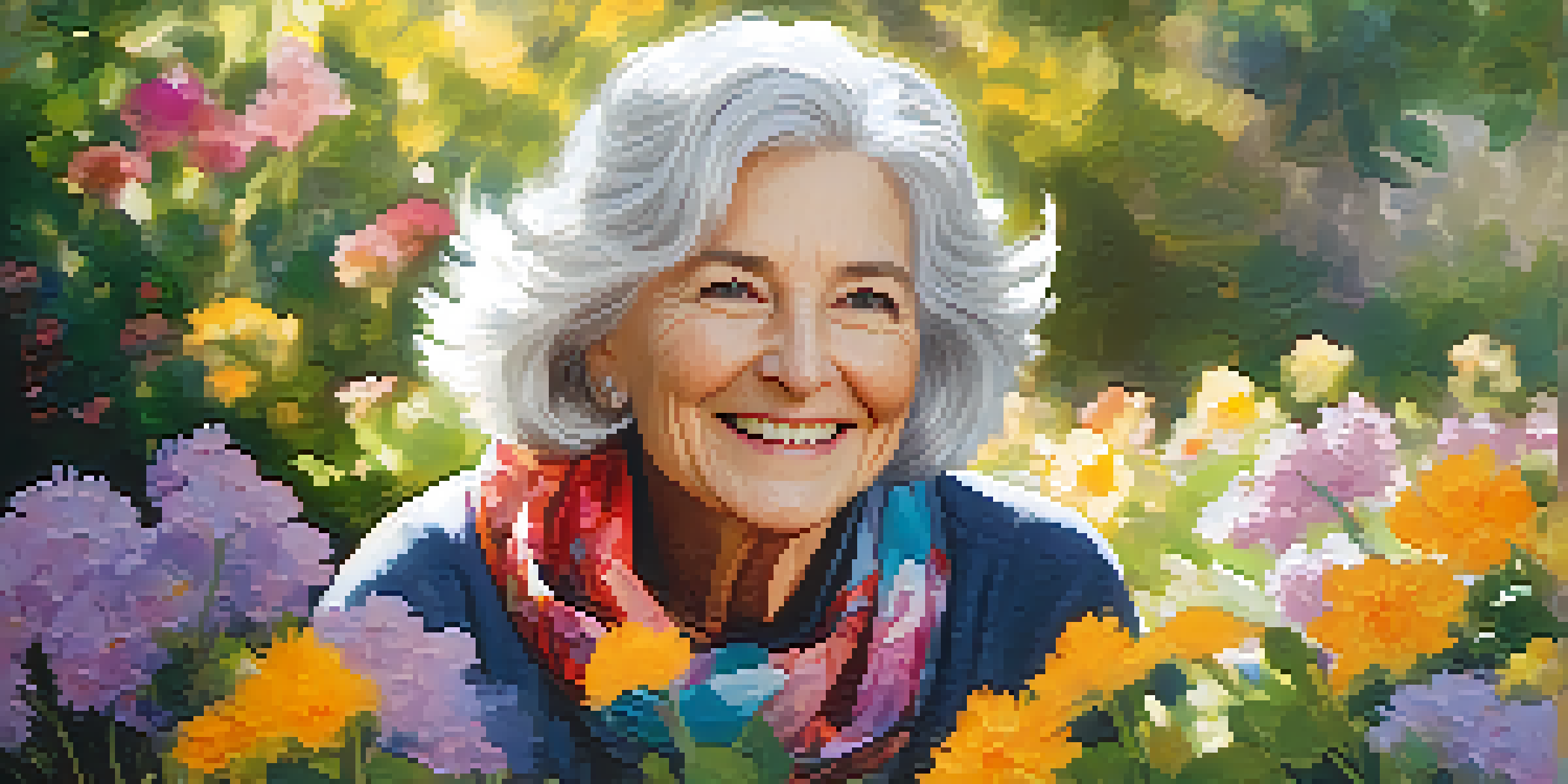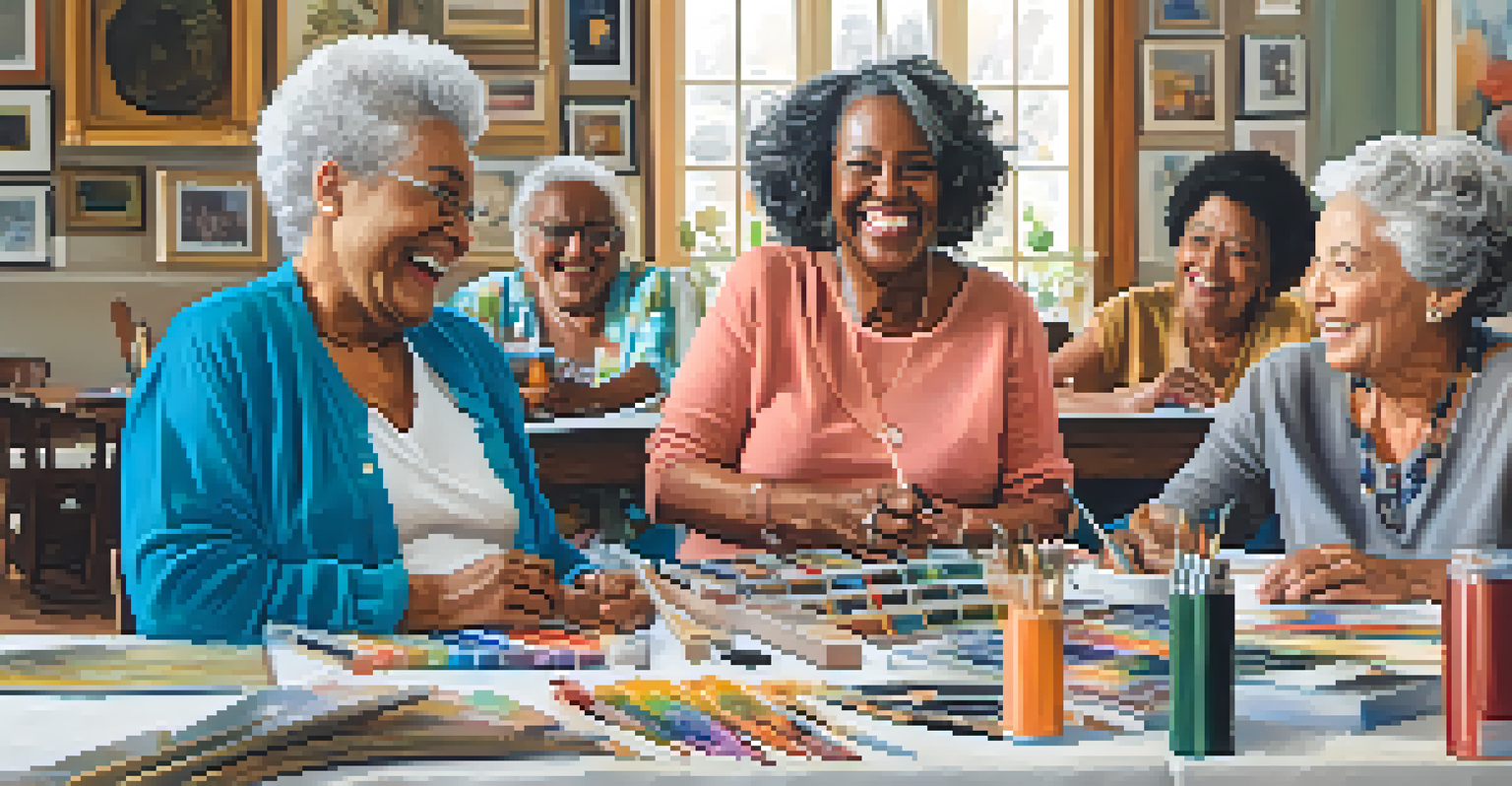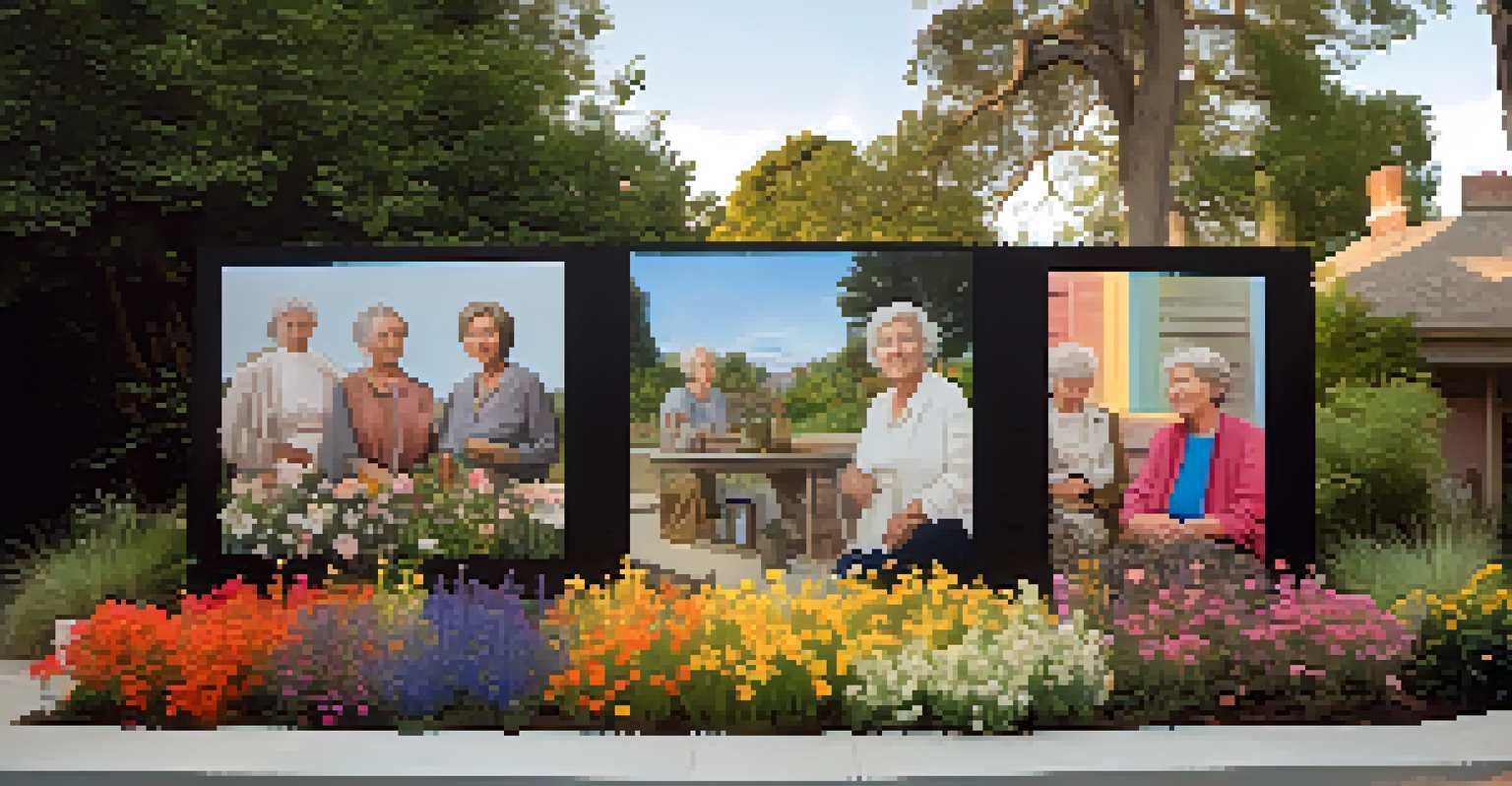Feminism and Aging: Female Figures in Contemporary Art

Understanding Feminism in the Context of Aging
Feminism has long sought to challenge societal norms, and when it comes to aging, it opens up a crucial dialogue. Aging women often face unique hurdles, including societal invisibility and ageism. By examining these issues through a feminist lens, we can uncover how art acts as a vehicle for empowerment and representation.
Aging is not lost youth but a new stage of opportunity and strength.
Many artists are now tackling the narratives around aging, showcasing the beauty and complexity of the female experience. Instead of being relegated to the sidelines, older women are stepping into the spotlight, demanding visibility and recognition. This shift in perspective not only challenges stereotypes but also enriches the conversation surrounding femininity and identity.
As we explore this intersection, it becomes clear that art plays a vital role in reshaping societal attitudes. Artists like Judy Chicago and Cindy Sherman are leading the charge, using their work to redefine what it means to be an aging woman today. Their contributions highlight the importance of visibility and representation in contemporary art.
Prominent Female Artists Challenging Age Norms
Contemporary art is increasingly showcasing the talents of older female artists who defy age-related stereotypes. Take, for instance, the work of artists like Lina Viktor and Susan Rothenberg, who use their platforms to celebrate the multifaceted lives of women as they age. Their art not only highlights personal narratives but also resonates with a broader audience seeking connection and understanding.

These artists often draw from their own experiences, creating pieces that speak to the trials and triumphs of aging. Their work serves as a mirror, reflecting the complexities of life that many women face as they grow older. As viewers, we are invited to engage with these narratives, fostering empathy and awareness around the subject of aging.
Art Empowers Aging Women
Artists are reshaping societal perceptions of aging women, using their work to challenge stereotypes and advocate for visibility.
Moreover, by centering aging women in their art, these artists challenge the traditional notions of beauty and worth. Their creations serve as a reminder that aging is not a decline but an evolution, filled with richness and depth. By redefining age through their artistic lens, they inspire others to embrace their own journeys.
Exploring Ageism Through Artistic Expression
Ageism remains a pervasive issue in our society, often manifesting in the arts as well. Many artists use their work to confront these biases head-on, exposing the often-ignored realities of aging women. Through various mediums, they engage audiences in conversations about the impact of ageism and the importance of representation.
Art is a way of survival.
For instance, installations that feature older women’s stories or performances that highlight their experiences allow for a deeper understanding of age-related challenges. These artistic expressions create a space for reflection, encouraging viewers to reconsider their perceptions of aging. As a result, they become catalysts for change, fostering a more inclusive dialogue.
Art has the power to challenge societal norms, and when combined with the feminist movement, it can lead to significant shifts in perspective. By confronting ageism, these artists not only advocate for themselves but also for future generations of women. Their work ultimately inspires a reimagining of aging as a dynamic and vital part of the human experience.
The Role of Intersectionality in Feminism and Aging
Intersectionality is a crucial concept in feminist discourse, highlighting how different identities intersect to shape experiences. When examining aging through this lens, we uncover the diverse challenges faced by women of various backgrounds. This complexity adds richness to the narratives presented in contemporary art.
Artists from marginalized communities often amplify their voices by addressing issues of race, class, and sexuality alongside aging. Their works invite viewers to consider how these intersecting identities impact the aging experience. By broadening the conversation, they ensure that the diverse realities of aging women are represented.
Intersectionality in Aging Discourse
Feminism and aging intersect through the lens of intersectionality, highlighting diverse experiences of women from various backgrounds.
This intersectional approach not only enriches the artistic landscape but also fosters greater understanding among audiences. As we engage with these varied perspectives, we begin to appreciate the nuances of aging, allowing for a more inclusive dialogue. Ultimately, it highlights the importance of solidarity among women of all ages and backgrounds.
The Impact of Social Media on Feminism and Aging
In the digital age, social media has become a powerful platform for artists and activists alike. Many older female artists leverage these channels to share their work and connect with audiences, breaking down barriers of age and visibility. This has created a vibrant community where aging women can share their stories and experiences.
Through hashtags and online campaigns, these artists challenge age-related stereotypes and foster a sense of empowerment. Social media platforms allow for the rapid dissemination of ideas, enabling discussions around feminism and aging to reach wider audiences. This democratization of art and activism encourages participation from women of all ages.
Furthermore, the visibility provided by social media can lead to greater representation in traditional art spaces. As these conversations gain momentum, galleries and institutions are increasingly recognizing the importance of showcasing the work of older female artists. This shift not only validates their contributions but also inspires future generations of women to pursue their artistic passions.
Art as a Tool for Activism and Advocacy
Art has long served as a powerful tool for activism, and when it comes to feminism and aging, it takes on even greater significance. Many artists use their work to raise awareness about the challenges faced by older women, advocating for change within society. Their art becomes a form of resistance against ageism and sexism.
Through exhibitions, performances, and installations, these artists create a dialogue that transcends the confines of traditional art spaces. Their work prompts conversations about rights, representation, and the need for social change. By engaging audiences in this way, they invite collective action and solidarity among women of all ages.
Social Media Fosters Community
Social media provides a platform for older female artists to connect, share their stories, and challenge age-related stereotypes.
Moreover, art can inspire policy changes and influence public perceptions. As these narratives gain visibility, they challenge societal norms and encourage a reevaluation of how we view aging women. In this way, art not only reflects society but also has the power to transform it for the better.
The Future of Feminism, Aging, and Art
As we look ahead, the relationship between feminism, aging, and art is poised for continued evolution. With more artists embracing the themes of aging and representation, we can expect to see even richer narratives that challenge societal norms. This progressive shift is vital for fostering inclusivity and understanding.
Emerging artists are increasingly inspired by the works of their predecessors, blending contemporary issues with traditional narratives. This cross-generational dialogue enriches the artistic landscape, allowing for diverse voices to be heard. As these conversations unfold, they pave the way for a more nuanced understanding of the aging experience.

Ultimately, the future promises a more vibrant and inclusive artistic community that celebrates the beauty of aging. By continuing to explore these themes, artists can inspire change and empower women to embrace their identities at every stage of life. The intersection of feminism and aging in art will undoubtedly remain a dynamic and compelling area of exploration.